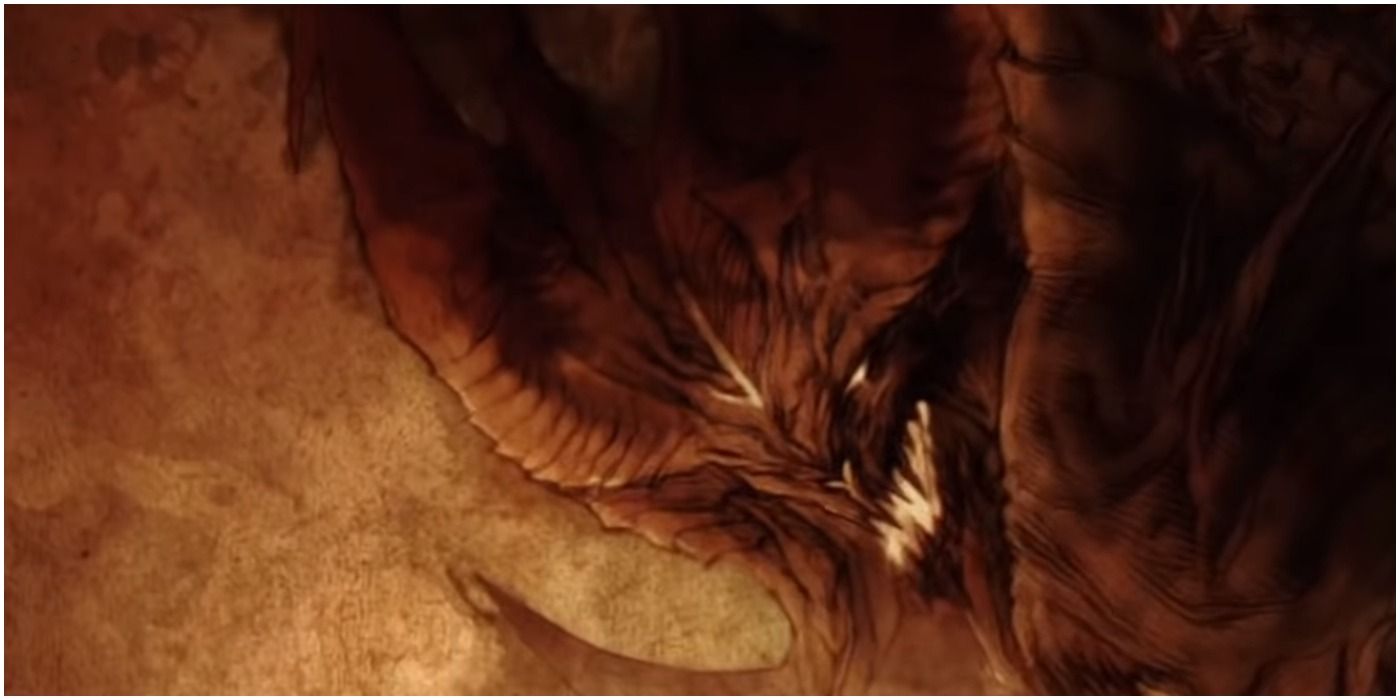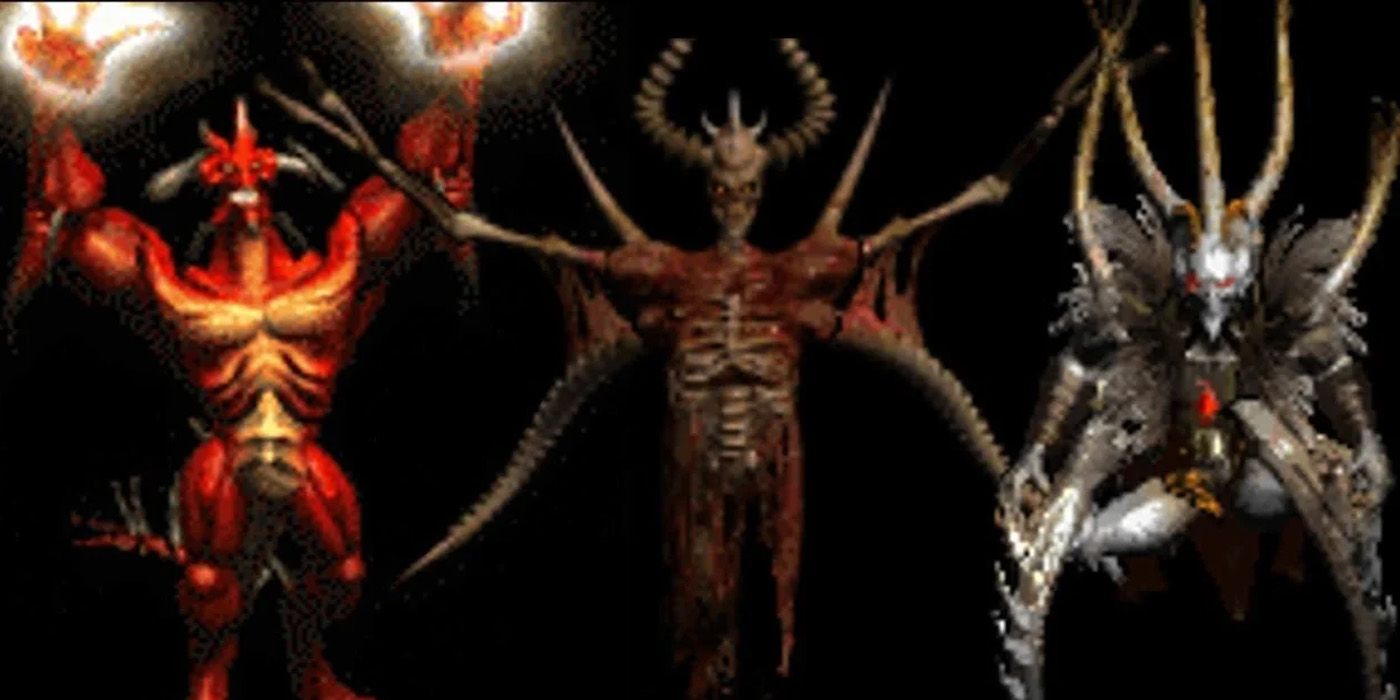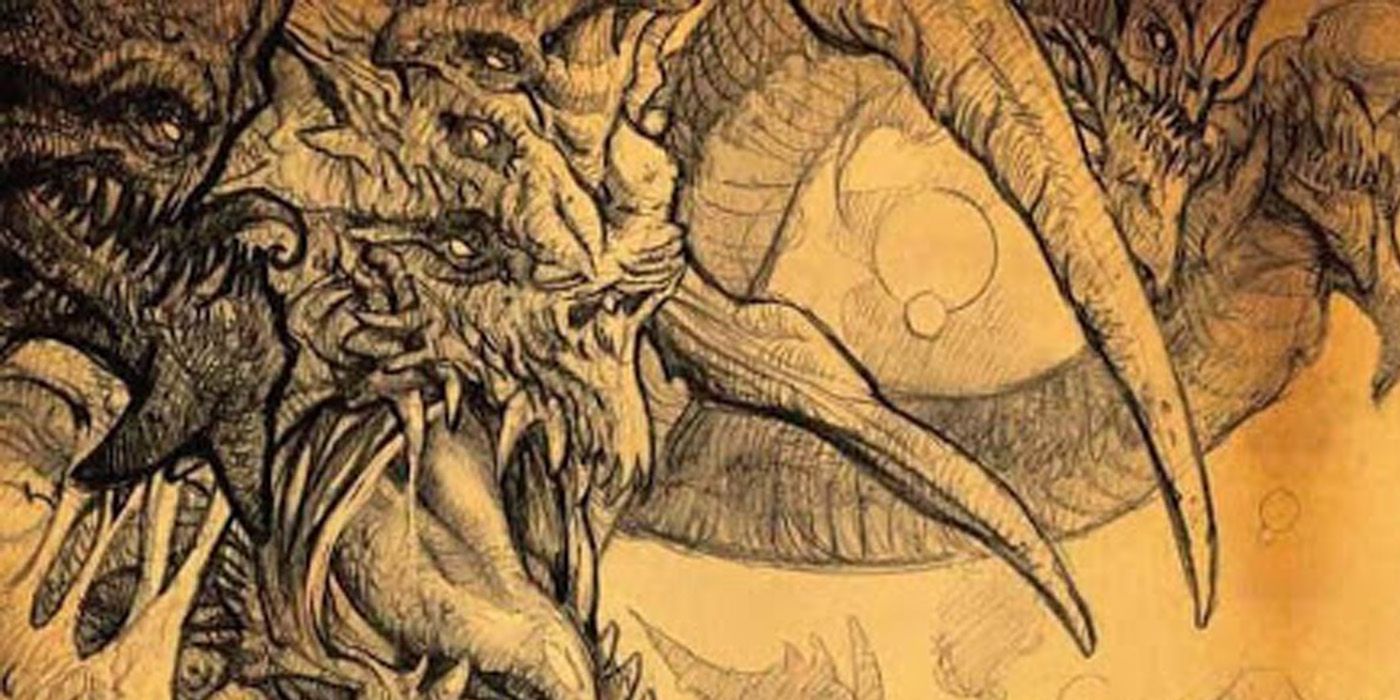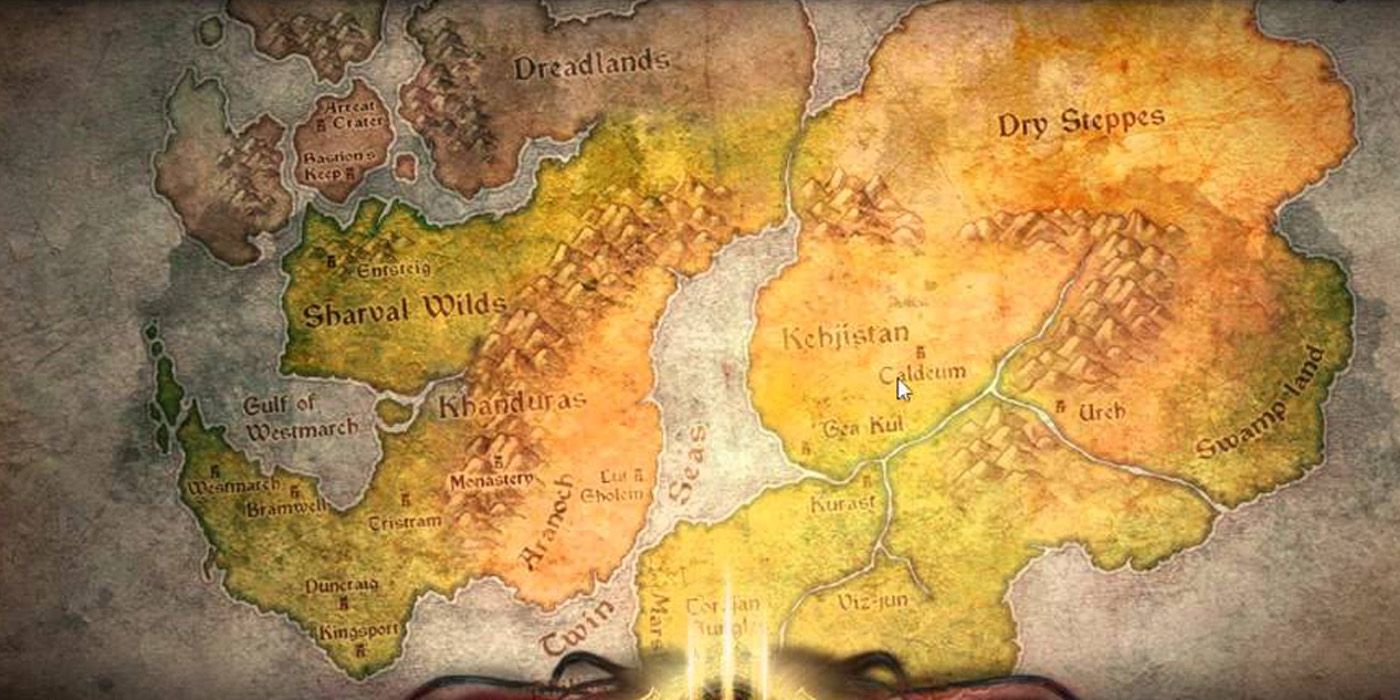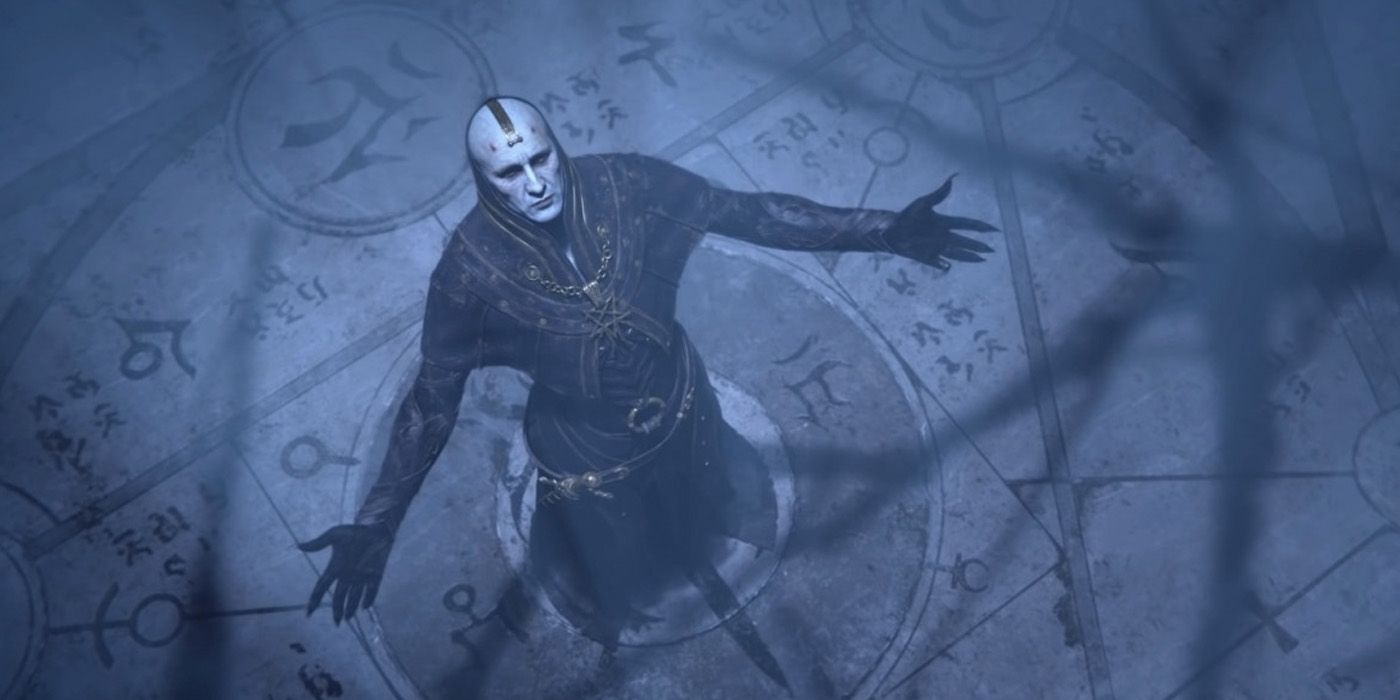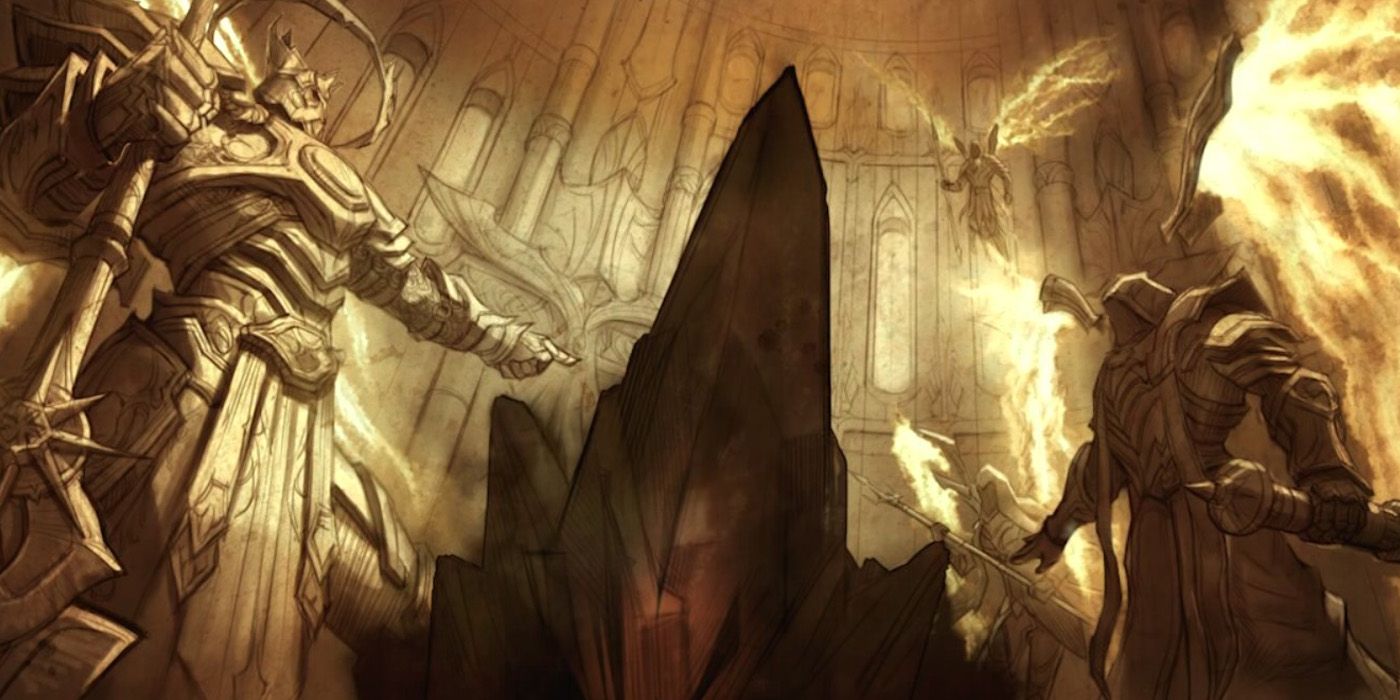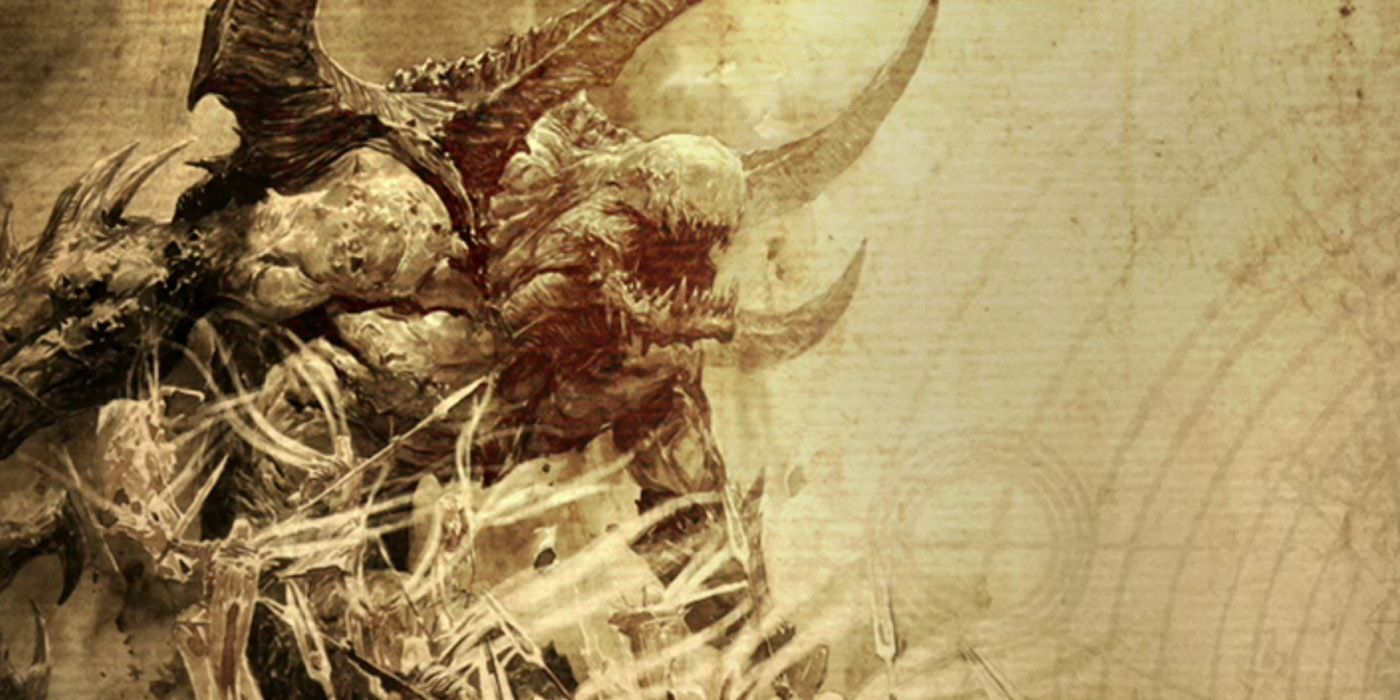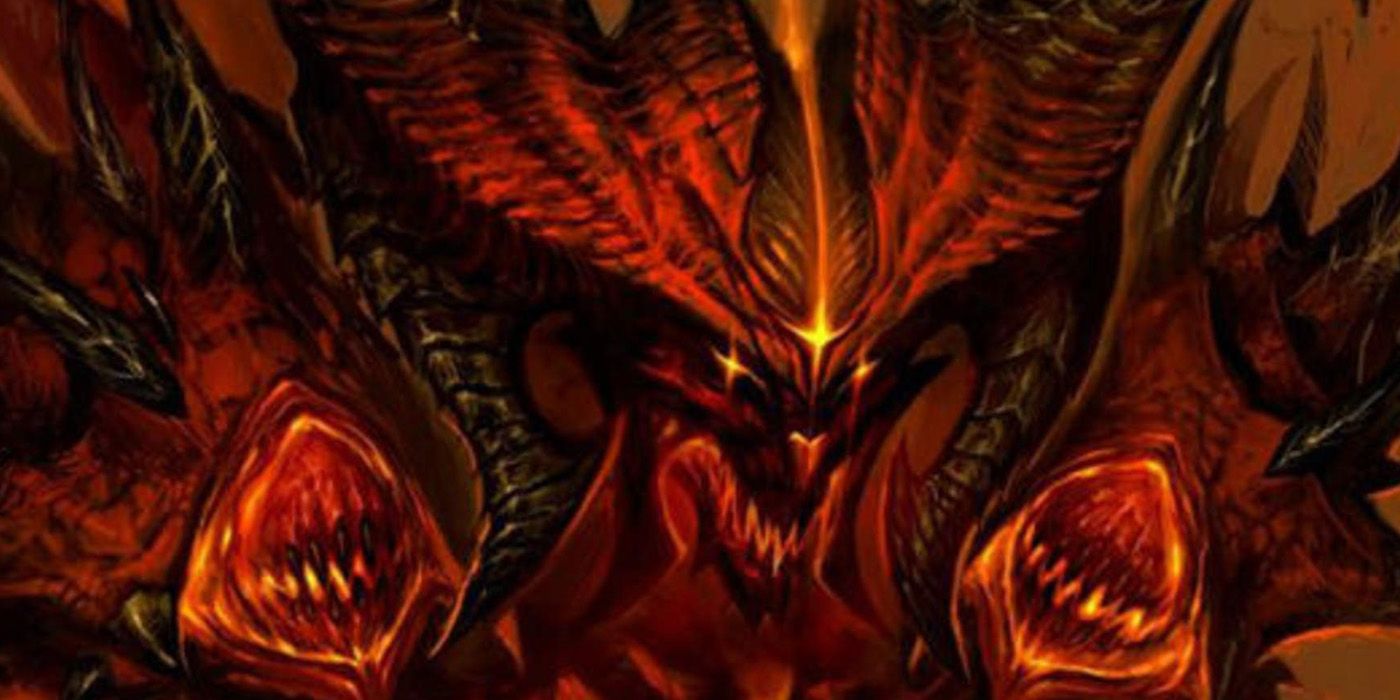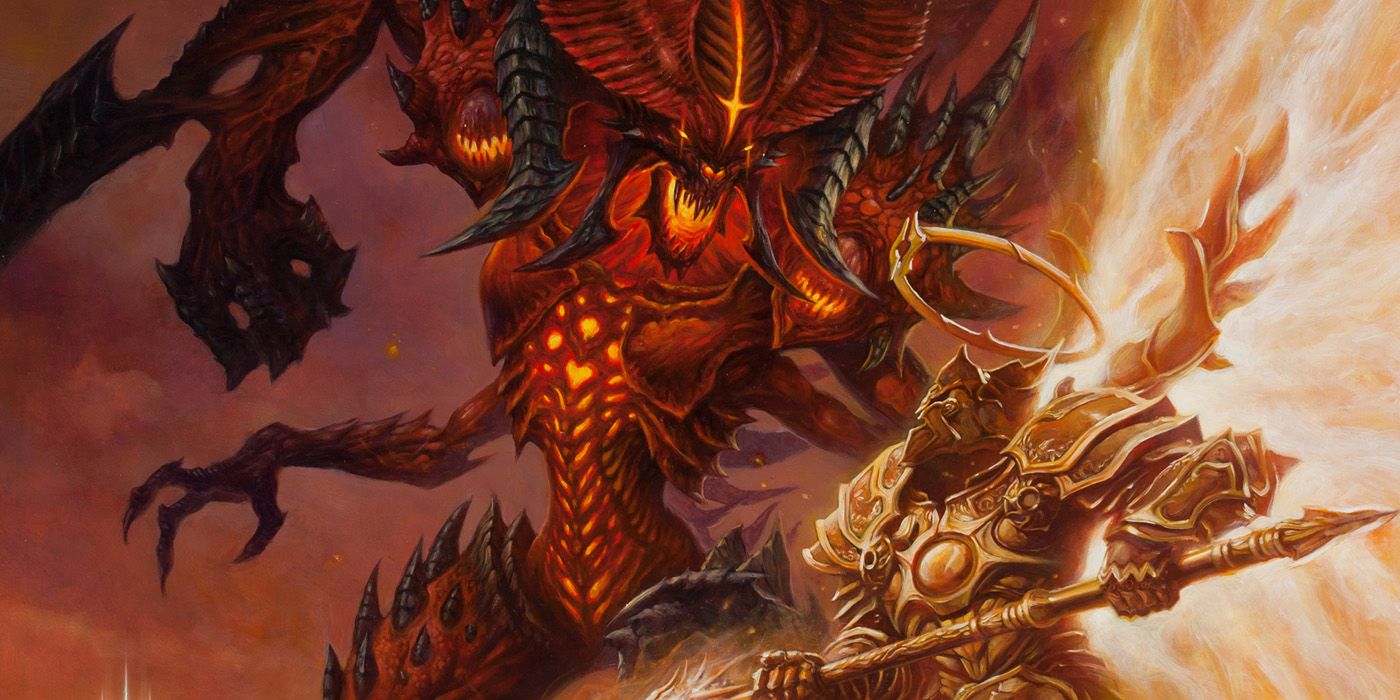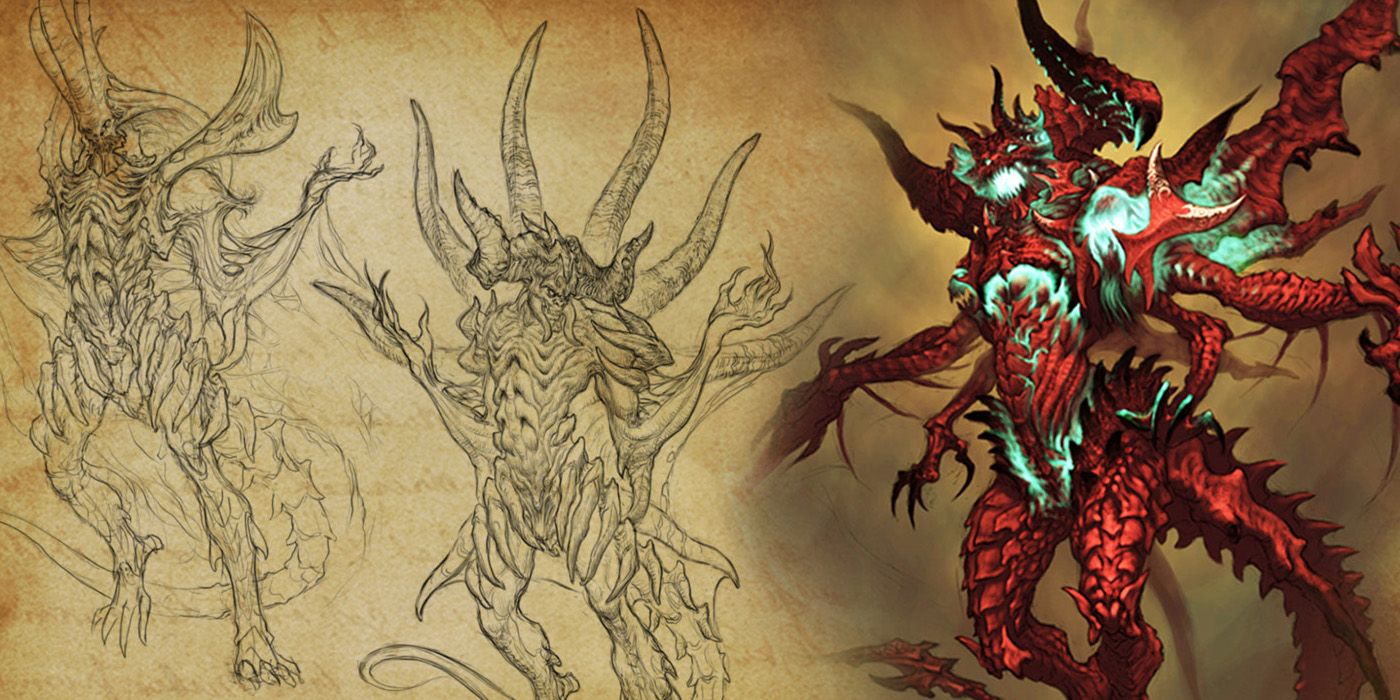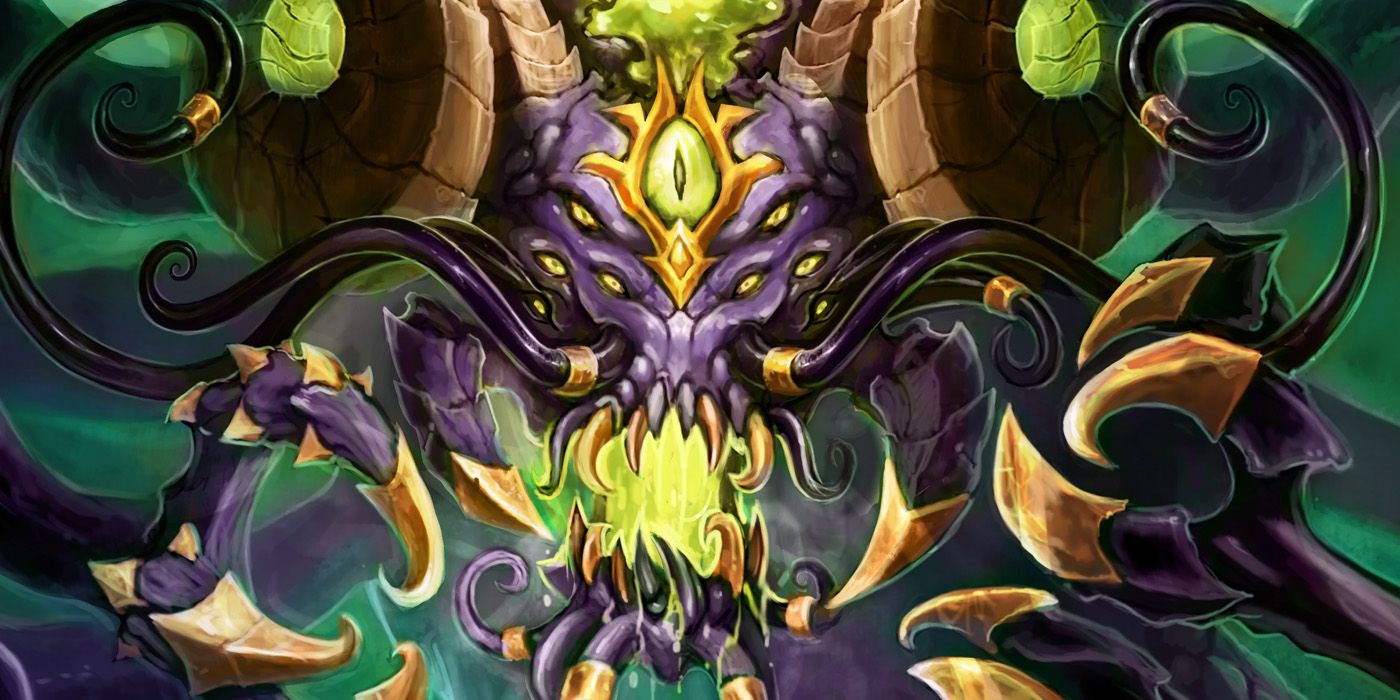In Blizzard's first Diablo game, players had the impression that Diablo, the Lord of Terror, holds the biggest threat to the village of Tristram. However, Diablo 2 reveals the existence of two Prime Evils - Mephisto the Lord of Terror, and Baal the Lord of Destruction. Players at the time need to destroy all Prime Evils to rid the world of Sanctuary of their threat. Diablo 3 revealed the existence of Lesser Evils - demons hell-bent on filling the power vacuum the Prime Evils left behind. Moreover, Diablo 4 now teased the return of Lilith, Mephisto's daughter, and mother of the Nephalem.
It seems there's more than meets the eye with the Diablo series' great triumvirate. Given their power and status, just what other secrets do they hold that may have key importance in the upcoming Diablo 4?
10 Served A Greater Part Of A Whole
When people of Sanctuary use the term "Prime Evils," they pertain to three powerful demons: Diablo, Mephisto, and Baal. The three served as part of a "greater" group called the Great Evils. Similar to High Heavens' Angiris Council, the Great Evils served as the Burning Hells' greatest representatives. While all seven Great Evils represented an aspect of evil, only the Prime Evils ruled Hell. In turn, the rest of them became the Lesser Evils.
Diablo became the Lord of Terror. Meanwhile, Mephisto became the Lord of Hatred. And lastly, Baal served as the Lord of Destruction. This hierarchy also represented the "primary" rule of the Burning Hells. For demonkind, terror will lead to hatred, and hatred will lead to destruction.
9 They Were Once Dragon Heads
The Prime Evils didn't "exist for as long as the Burning Hells." In fact, the Prime Evils - alongside the rest of the Great Evils - have come from a Tathamet, a seven-headed dragon creature. According to lore, Tathamet the Prime Evil served as the "counterpart" to Anu's everlasting goodness.
When Anu and Tathamet's clash led to their destruction, Tathamet's death led to the creation of the Burning Hells. Each of Tathamet's heads also created each of the Great Evils. In turn, its three most powerful heads became Diablo, Mephisto, and Baal.
8 They Discovered Sanctuary First
When the rogue Archangel Inarius and Mephisto's daughter Lilith created Sanctuary and the Nephalem, it's the Burning Hells that discovered their existence first. While the Worldstone managed to mask Sanctuary's presence, the Vizjerei or Spirit Clan of Nephalem mistakenly used their magic and opened communications with demons, who they thought were simply spirits. Unfortunately, this led the Prime Evils to discover the fruits of Inarius and Lilith's escape.
The Prime Evils also saw firsthand the potential of the Nephalem to surpass their angel and demon parents. The imperfect and mortal nature of the Nephalem made them prime for corruption and deceit. They may become powerful allies in the Eternal Conflict.
7 They Made A Religion For War
When the Prime Evils finally discovered Sanctuary and Humanity, they did quick work to trying to secure the Nephalem as an ally. The Prime Evils created the Triune, a religion based on their worship. However, instead of revealing their true names, they used namesakes instead.
Alas, the Triune called for the worship of Dialon (Diablo), the Spirit of Determination, as well as Mefis (Mephisto) the Spirit of Love, and Bala (Baal) the Spirit of Creation. The Prime Evils also positioned Lucion, Mephisto's son, as its representative leader. Moreover, when Lilith got resurrected in Diablo 4, it's hinted that the Triune may have been involved in the process.
6 They Struck A Deal With The High Heavens
It seems even the devil makes deals. When the Prime Evils created the Triune, Inarius caught wind of their schemes and created his own church, the Cathedral of Light. In turn, the two factions would slowly try to influence humanity to follow their beliefs in the cold war known as the Sin War.
At the end of the War, a potential conflict with the High Heavens and the reawakened Nephalem (the Edyrem) might destroy Sanctuary. Edyrem leader Uldyssian willed out his own existence to eradicate the world of the Nephalem's powers. After the War, Mephisto and the Prime Evils came to an agreement with the Angiris Council: Sanctuary will be left alone, and humanity will choose their own path.
5 The Lesser Evils Ones Exiled Them
After the Sin War, a rift formed between the Prime Evils and the Lesser Evils. After all, the Prime Evils kept the existence of the Nephalem a secret to the Lesser Evils. Meanwhile, the latter became irritated at the fixation of the Prime Evils with humanity, when a war had to be fought. As such, the Lesser Evils rebelled against the Prime Evils and exiled them to Sanctuary.
While the Lesser Evils thought they "won," the Prime Evils had planned for this to happen all along. Now that they're in Sanctuary, they can directly influence the course of humanity's history to their favor. Their terrifying machinations caused the events throughout the Diablo series.
4 They Can Never Really Die
Whereas the essences of slain angels get sent back to the Crystal Arch, demons can never really "die" in Diablo. It's revealed that killed demons simply reappear in the Burning Hells, ready to unleash terror in the Eternal Conflict once more. However, this "immortality" of sorts applied to the Prime Evils. In turn, Prime Evils just go back to the Burning Hells after being slain.
This explains why heroes and other historical figures take excruciatingly-painful efforts just to "contain" the essences of the Prime Evils. These come in the form of soulstones, or even human bodies that hope to resist the temptation of falling into the dark path. It's Aiden, the Warrior from Diablo 1, that tried to contain the Lord of Terror inside of him. Unfortunately, Aidan fails this mission, as seen in Diablo 2.
3 Diablo Gambled Everything For Victory
As proven by Diablo at the end of Diablo 3, the Prime Evils - or all the Great Evils, for that matter - can unite once more into a singular, all-powerful Prime Evil. However, perhaps more interesting was how Diablo gambled for everything to be in his favor. While in possession of Aidan, Diablo made sure to conceive a daughter with Adria, who may be his host. Fortunately for him, the power-hungry Adria was easy to manipulate into searching for the Black Soulstone.
Come Diablo 3, Adria had the Black Soulstone with the essences of Duriel, Andariel, Diablo, Baal, and Mephisto - all bosses in Diablo 2. The Lord of Terror then allowed the Lords of Hell to attempt to search for the Black Soulstone in Sanctuary. After all, Diablo knows that heroes will try to stop these generals. With Adria as their "guide," Diablo made sure the Lords of Hell were defeated, and their essences captured. It's by then that Adria sacrificed Leah and turned her into Diablo's vessel, sparking the renewed invasion to the High Heavens.
2 Tathamet's Serpent Motif May Have Influenced Their Design
Unlike popular depictions of demons, Diablo's demonkind - and in turn, the Prime Evils - share characteristics similar to insects, serpents, and dragons. These include scales, draconic wings, mandibles, and even extra appendages from their bodies. In the case of Tathamet, its design and namesake may have come from Tiamat, the Babylonian primordial goddess of the oceans.
Tathamet's depiction may have been inspired by the Serpent and the Beast. These also became two representations of evil in the New Testament. In turn, this may explain why Diablo, Mephisto, and Baal all have extra appendages, scale-like skin, and even serpentine motifs.
1 A Counterpart In Azeroth
The story of Tathamet and the Prime Evils may have echoed in realms far beyond Sanctuary. In Blizzard's Warcraft, its expanded mythos involves the Old Gods and the power they hold over the chaos and Void. Y'Shaarj, the most powerful of the Old Gods, had seven heads prior to its destruction.
As such, when the Titans have killed Y'Shaarj, its last breath has formed the seven prime Sha. These Sha served as the manifestations of negative emotions. These include Pride, Despair, Doubt, Fear, Violence, Hatred, and Anger.

